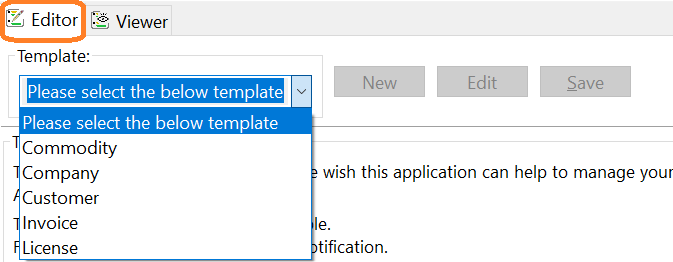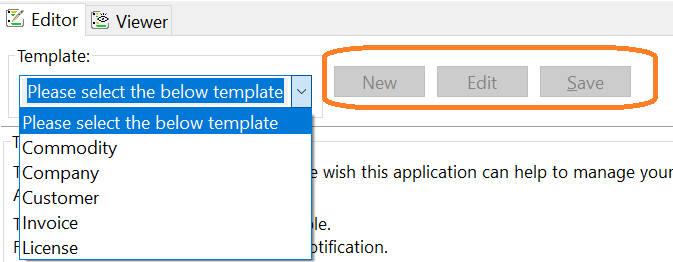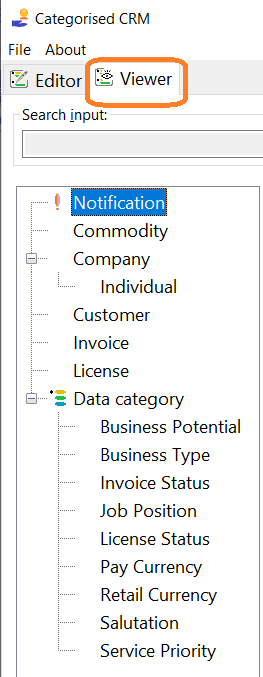Introduction to database and CRM Basic:
Please send us email for any comments
The elementary definition of Relational Database (RDBMS) is a type of database that stores and provides access to data points that are related to one another. The Categorised CRM which is the software application that has dedicated relational database and automatically data categorised internally. It is not necessarily to install any Relational Database (e.g., MSSQL, MySQL). There is also no need any SQL statement to access to the database. Furthermore, the input data are extendable and growth easily.
The categorised CRM is the first, best, simplest, and fastest CRM application just recently launched. This application consists of 5 templates for CRM table. There is a "Commodity", “Company”, “Customer”, “Invoice” and “License”. The “Commodity (it can be any products, any services, any materials) template allows user to keep track on any "commodity" that sell or provide service to customer.
Guided illustration:
The following diagrams illustrate user interface design.
There are two-tab pages in this application. The “Editor” page allows add and edit the template table. The “Viewer” page allows view the database and data category instantly.

Figure 4. This is the “Editor” tab page.
There is a “Commodity” (it can be any products, any services, any materials) template allows user to keep track on any “commodity” that sell or provide service to customer.
There is a “Company” template allows user to input the company name. The pre-created one is the “Individual” that meant customer is not belonging to any company. This kind of customer is the individual identity.
There is a “Customer” template allows user to input the customer information. This is important for any marketers or sales to keep track, keep record on any potential customer.
There is a “Invoice” template allows user to issue the invoice (or official receipt) to customer. This template can help to calculate the income (not available for basic version).
There is a “License” template allows user to input the license information (“License” can be treated as a “Contract”).

Figure 5. A drop-down list of “Template”, the first one is the “notification”.
Note:
Suggested that add new template in sequence: “Commodity” > “Company” > “Customer” > “Invoice” > “License”

Figure 6. There are three buttons in the user interface. There are “New” (insert new record), “Edit” (edit the default table content) and “Save” (save the changes). There is also hidden button “Unedit” (give up any edited data).
There are 9 data categories automatically generated. This “Data Category” helps to find out any data relationship and reference.

Figure 7. This is the “Viewer” tab page. Illustrate the 5 dedicated templates and a “Data category”.
Summary:
The application “Categorised CRM which is consisting standalone relational database is easy to management the internal tables. There are 5 templates for pre-designed table for user to add customer information. This application is a basic version. The more features are coming, and more detailed user guide will be provided in future.
Download:
Categorised CRM in Microsoft Store
Categorised CRM Basic in Microsoft Store